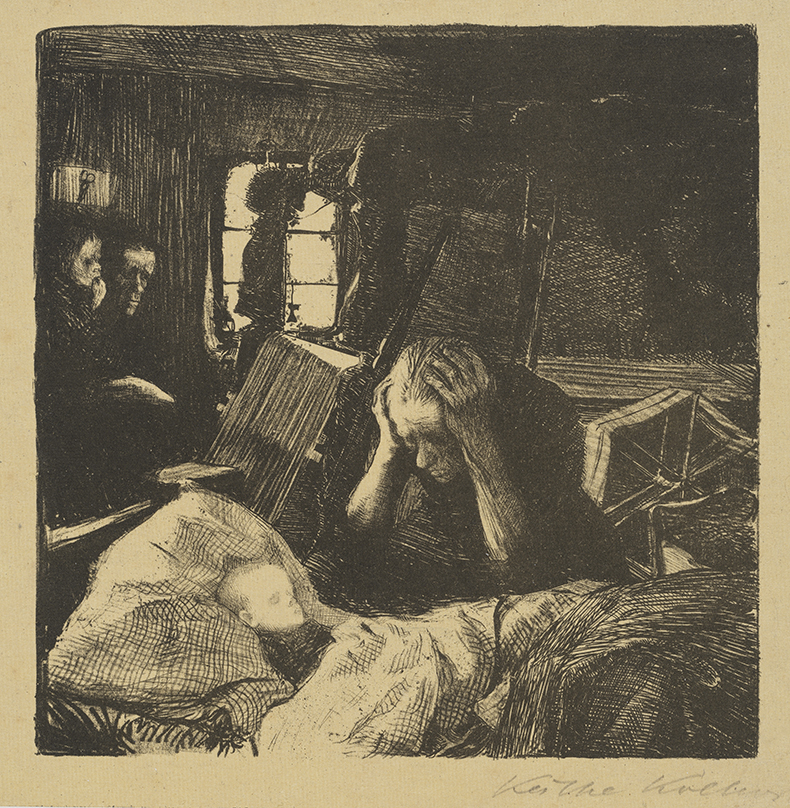The art of Käthe Kollwitz (1867–1945) carries traces of the terrifying gloom that characterises much of the art of her contemporaries Otto Dix, Ernst Ludwig Kirchner and other German Expressionists. Kollwitz, however, had a more fervent belief than many of her peers in the capacity of art to influence the masses and bring about social change. It is this impulse that explains why, from the 1890s onwards, Kollwitz worked mainly in the repeatable and distributable medium of print, producing works such as A Weavers’ Revolt, a series of line etchings inspired by Émile Zola’s novel Germinal; the woodcut series War (1918–23), a statement of pacifism that includes the chilling yet hopeful The Mothers (1922–23); as well as text-based protest art. Much of Kollwitz’s political work is on show in ‘Käthe Kollwitz – Mensch’ (the first major exhibition of the artist’s work in Denmark), along with intense self-portraits and lesser-known sculptures, which she produced towards the end of her life (7 November–23 February 2025). Find out more from the National Gallery of Denmark’s website.
Preview below | View Apollo’s Art Diary

Need from the cycle A Weavers’ Revolt (1893–97), by Käthe Kollwitz. SMK, National Gallery of Denmark

The Mothers from the series War (1921–22) by Käthe Kollwitz. Käthe Kollwitz Museum, Köln

Self-Portrait (1924), Käthe Kollwitz. Käthe Kollwitz Museum Köln

Pietà (1941–43), Käthe Kollwitz. Collection Ute Kahl, Cologne. Photo: Fuis Photographie
Unlimited access from just $16 every 3 months
Subscribe to get unlimited and exclusive access to the top art stories, interviews and exhibition reviews.












![Masterpiece [Re]discovery 2022. Photo: Ben Fisher Photography, courtesy of Masterpiece London](http://www.apollo-magazine.com/wp-content/uploads/2022/07/MPL2022_4263.jpg)
When the Nazis pilloried modern art